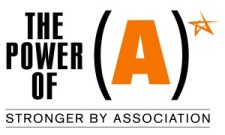Basso continuo
18 April 2011 Leave a comment
Johannes Kepler described music as one of the four harmonies that hold the universe together. (Geometry, Astrology and Astronomy are the other three, if anyone cares.)
And yes, this really does have something to do with associations.
I recently moderated a panel on Hegel. Brown and Davison’s The Power of Pull. The book contrasts traditional “push” systems (top down, strictly managed and closed production systems, engineered to exploit efficiencies in order to achieve economies of scope and scale) with emerging “pull” systems (more free formed, decentralized, nimble, modular and transitory). The topic was to what extent associations were or should be pull platforms.
And the musical concept of the “continuo” came into my mind. In renaissance music, it is the droning bass line that supports the melody. In baroque music, it is usually a low string instrument, like the cello, that provides the harmonic structure that holds the music together and keeps it moving forward while the melody and development occurs elsewhere in the ensemble in a more free form and unconstrained manner. (You can’t help but hear it in a piece like Pachelbel’s Canon, and believe me, you HAVE heard that piece, at a wedding or in a doctor’s office or in an elevator.) In jazz, this role is usually taken up in the rhythm section (piano, guitar and drums), offering a solid foundation for the wildest and most free form improvisations going on elsewhere in the band. There is probably a modern equivalent of basso continuo in rock and rap.
And what does this all have to do with associations? Well my personal conclusion is that associations are the very essence of pull systems. The voluntary nature of the enterprise, the need for collaboration based on something more than position authority, the networking and community that are central to the association’s nature, the association world’s embrace of social networking …. all of this screams “pull platform.”
But associations also serve as the basso continuo: the strictly structured, sustaining bass line of activity for the trade or profession that holds up and enables the inventiveness, creativity and innovation. It isn’t always glamorous. It isn’t the part of the tune that sticks in your head. But without these mundane, push features, the melody and improvisation would fall apart and come tumbling down.
(Still hung up on the reference to Kepler? He was a German mathematician, astronomer and astrologer and a key figure in the 17th century scientific revolution whose name is still attached to fundamental principles of planetary motion.)

